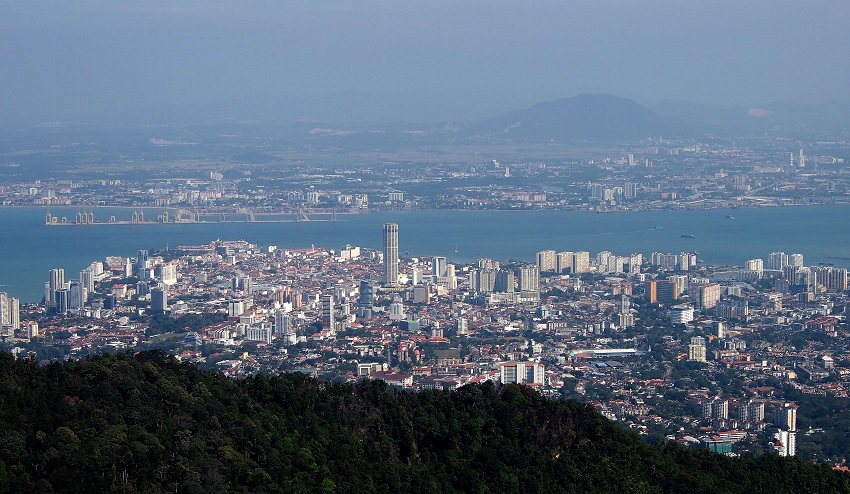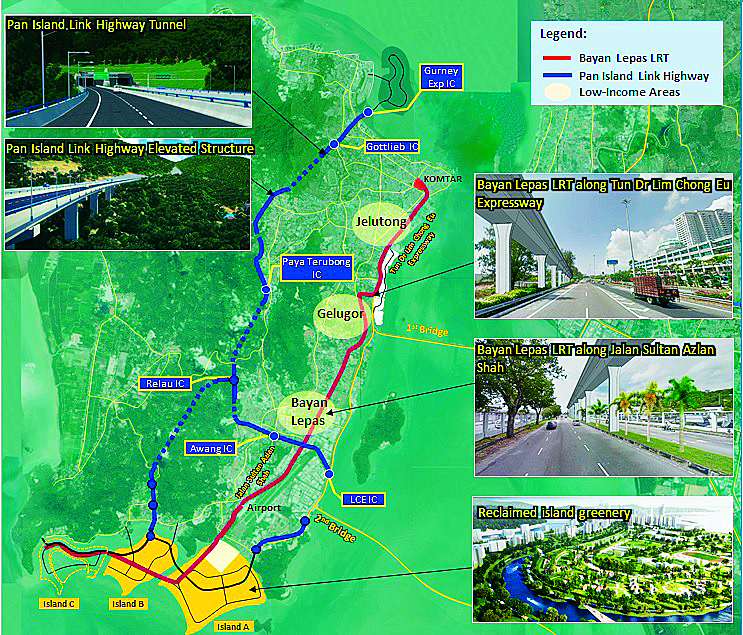Penang state government’s RM46 billion plan to modernize the transport network of the state has failed to impress some of the local residents, with one critic writing directly the UNESCO to warn it of the risks to Georgetown’s World Heritage site.
Describing the letter as a stab in the back, state chief minister Lim Guan Eng noted that the transport plan is crucial.
“We are always looking for ‘game changers’ whether in economics, business or government, and I’m also looking at ‘life changers’ that can affect every citizen in the state. If we can get this done it will provide the basis for the economic prosperity of Penang until 2050,” said Lim.
Home to 1.7 million people, the state of Penang includes the Penang island and part of the Malaysian mainland, which are linked by a ferry service and two bridges.
During peak hour, traffic slows to a crawl as about 90 percent of journeys are made in private vehicles. Given the rise in population and number of tourists flocking to nearby beaches and the historic city, the state government fears the hilly and forested island is set for daily gridlock.
As such, it commissioned UK-based consultants Halcrow to conceptualise the state’s transport master plan. Approved in 2013, the concept had been fleshed out in a more detailed proposal by SRS Consortium – a Malaysian group which includes construction giant Gamuda as well as two local developers.
Due for completion in 2013, the first phase will see the construction of a 21km elevated light rail transit line and a toll-free highway, both of which will connect the centre of Georgetown with the international airport. Future phases include a cable car, additional LRT lines and a tunnel connecting the north of the island to the mainland.
Three small islands, which will be created by reclamation, will be sold by the state to pay for the works.
While the aim is to ease travel, the project has been met with scepticism, said Lim.
“The state government has not been able to convince the public or civil society groups that (the plan) is the best option,” said Singapore-based researcher in architectural heritage Soon-Tzu Speechley, who used to live in Penang.
“We’ve got bridges and a ferry service that could be improved so why do we need a cable car? Likewise with the undersea tunnel. These are very expensive projects.”
Some of the local residents believe the plans are excessive for the needs of the city, while others questioned the financing.
“They are not thinking out of the box,” said Alex Lee, an artist who lives in Georgetown’s heritage area. “If they can come up with the land sale, they can come up with another idea other than selling land. We don’t need to sell our soul to the devil.”
Penang Forum, the plan’s most vocal critic, is worried the construction will put a heavy toll not only on the state’s finances but also on its environment and heritage.
In its letter to the UNESCO, the group voiced its concern that the elevated interchange at Sia Boey will spoil the views of the old city, and asked the organisation to make an impact assessment on the heritage site.
The group proposed an alternative transport system, which involved trams, buses and bicycles. It noted that the cost of constructing a tram track to the airport would only be around RM1.68 billion compared to the RM4.4 billion cost for the LRT.
Penang Forum revealed that the annual maintenance and operating costs for the tram line will be less than 50 percent compared to that for the LRT.
To wean people off driving, the group urge the state to increase congestion fees and parking charges, saying that the revenues can be used to develop the public transport system.
“It’s something very doable,” said city councillor Lim Mah Hui, who also leads the forum and wrote the UNESCO letter.
“The traffic is not as bad as Kuala Lumpur, only during peak times, so there’s no need to spend (nearly) 50 billion ringgit that we do not have. Why use a hammer on something that’s not even a nail?”
Mangalesri Chandrasekaran, Editor at PropertyGuru, edited this story. To contact her about this or other stories email mangales@propertyguru.com.my

